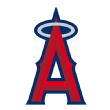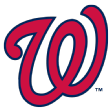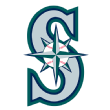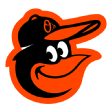[h=1]Your team will win the 2019 World Series if ...[/h]
ESPN PLUS ($ MATERIAL)
Welcome to Opening Day! OK, that was Thursday. Unless you count the two memorable games in Japan, which you should, because they're in the standings. Whatever. This is my first chance to bid you a happy new season, so there you go. I am excited. Truly. I feel like this is going to be a special season, with so many stars locked into long-term homes, a packed National League and another season of multiple powerhouses atop the American League.
Last year at this time, we did a fun little exercise when I unveiled my start-of-the-season forecast, where we touched upon what every team -- yes, every team -- needed to do to win the title. I did that through the prism of the number of breakout seasons. This time, we're going to mix it up and look at run differentials.
Runs can come from any spot on the roster and any phase of the game. Offense. Fielding. Pitching. When we express a run differential, it's just one integral number, but there is so much that goes into it.
Today, we'll see if we can map out how each team can find the runs it needs to find its path to paradise.
Technical notes
1. Teams are listed in order of their average wins for 10,000 simulations of the 2019 MLB schedule. The basis of the simulations was the baseline projection for each team, noted in our initial power rankings.
2. Each team's baseline projected run differential is listed. As a very loose and very general rule of thumb, a team needs to finish at least plus-75 in order to generate about a 5 percent shot at winning the World Series in the simulations.
3. This number (plus-75) varies, of course, depending on how stratified the leagues are in a given season and how difficult a path each team faces to win their division, league pennant, etc. Nevertheless, we're listing each team's shortfall between projected run differential and plus-75. Obviously, a few elite teams already clear that bar.
4. Also listed are each club's odds to win its division, take the pennant or win the World Series. This is also based on the aforementioned run of 10,000 simulated seasons.
<offer style="box-sizing: border-box;"></offer>
[h=3]Already there[/h]
 1. Boston Red Sox
1. Boston Red Sox
Simulation wins: 100.2 | Projected run differential: +173
AL East title rate: 65.7 percent | AL pennant rate: 31.0 percent | World Series title rate: 19.1 percent
Runs needed for title contention: 0
As baseball's top team entering the season, the Red Sox are sitting pretty in terms of being somewhere in the midst of title contention. One thing about the probabilities here for both the BoSox and the Yankees is that my system isn't as sold on the Rays objectively as many, including myself, are subjectively. If Tampa Bay is really a 90- to 94-win team, then the odds for New York and Boston are reduced accordingly. Nevertheless, expect another eventful late season at Fenway Park.
 2. Cleveland Indians
2. Cleveland Indians
Sim. wins: 95.7 | Proj. run differential: +101
AL Central title: 88.2 percent | AL pennant: 22.3 percent | WS title: 12.4 percent
Runs needed for title contention: 0
Remember that comment earlier about path? Here is where you see that come into play. The Indians' projected run differential (plus-101) is very good, but it's not as good as that of a few others from baseball's elite tier. None of those teams, however, resides in the AL Central. Cleveland's 88 percent shot at another division crown is the highest of any team. Thus, when the simulations run, the Indians are almost always a part of it. That is reflected in their No. 2 standing in simulated wins, by a fraction over the No. 3 Yankees. However, this is a top-heavy team that is already looking at a prolonged absence from MVP candidate Francisco Lindor. That type of variability is why in my system no team clocks in as a dead-certain playoff team on Opening Day.
 3. New York Yankees
3. New York Yankees
Sim. wins: 95.7 | Proj. run differential: +133
AL East title: 32.2 percent | AL pennant: 16.3 percent | WS title:9.0 percent
Runs needed for title contention: 0
The Yankees are prime contenders but have just a 1-in-3 shot at the AL East title because of the on-paper superiority of the Red Sox. So while the Bombers' plus-133 forecast in run differential easily clears the bar for contending status, it is worth wondering where they might find some of the 42 runs that separate them from the Red Sox. No joke: The answer might be in their leather ball gloves. The Yankees were a combined minus-38 defensive runs saved last season at first and third base, including minus-28 at the hot corner, primarily the domain of Miguel Andujar. Getting to league average defensively won't be easy at those spots, but if it happens, the gap between the Yanks and Sox vanishes.
 4. Houston Astros
4. Houston Astros
Sim. wins: 95.0 | Proj. run differential: +136
AL West title: 70.7 percent | AL pennant: 21.2 percent | WS title:11.4 percent
Runs needed for title contention: 0
The Astros are loaded once again, though they aren't quite shoo-ins in the AL West because of some very mild concerns about the starting rotation after Justin Verlander and Gerrit Cole. Houston has plenty of talent on its staff and a couple of its rotation options -- Collin McHugh and Brad Peacock -- have been successful starters in the past but are transitioning from bullpen roles. As for closing the gap on the Yankees and Red Sox, here's one possibility: George Springer created 100 and 99 runs (via the Bill James Handbook) in 2016 and 2017, respectively, but slumped to 84 last season. A bounce-back season at the dish is worth at least a couple of wins to the talented Astros.
 5. Los Angeles Dodgers
5. Los Angeles Dodgers
Sim. wins: 95.0 | Proj. run differential: +120
NL West title: 83.5 percent | NL pennant: 29.2 percent | WS title: 14.7 percent
Runs needed for title contention: 0
The Dodgers have a 116-run buffer over the Rockies, the No. 2 forecast team in the NL West. Thus, L.A. joins Cleveland as the only two clubs with a division title probability of greater than 80 percent. Of course, the Dodgers looked to have a similar edge in its division at this time last season and wound up going to game 163 to wrap up their sixth consecutive first-place finish. The biggest area of likely gain for the Dodgers could simply be a return to form for star reliever Kenley Jansen. He's used in a fairly similar role from year to year that leaves him with around 70 or so innings pitched each season. Last season, he allowed 28 runs, up from 11 the season before.
That, in itself, is a sizable number, but it fails to take into account the high-leverage situations that Jansen handles, which basically doubles the run impact of his 2018 shortfall. If Jansen is back to his former dominance, the Dodgers would appear to be invulnerable in their division.
 6. Chicago Cubs
6. Chicago Cubs
Sim. wins: 92.9 | Proj. run differential: +122
NL Central title: 57.6 percent | NL pennant: 22.1 percent | WS title: 11.1 percent
Runs needed for title contention: 0
With the Brewers and Cardinals breathing down their proverbial necks, the Cubs need all the positive regression they can get after a winter that was light on personnel changes. Regression is built into projections -- it's the most important part of them, really -- which is why the Cubs look like a solid favorite to return to the top of the NL Central. The biggest example of that is Kris Bryant, whose 2018 production was undermined by injury. Bryant created 233 runs over the two-season span of 2016-17. Last season, he was at 65. Sure, others like David Bote were creating runs in Bryant's place while he was out, but you just don't find 110- to 120-runs-per-year hitters sitting around in dugouts. Bryant is the biggest reason to expect the Cubs to improve upon their disappointing, but still solid, 2018 season.
 7. Milwaukee Brewers
7. Milwaukee Brewers
Sim. wins: 87.8 | Proj. run differential: +76
NL Central title: 25.9 percent | NL pennant: 9.8 percent | WS title: 4.1 percent
Runs needed for title contention: 0
The way in which big league managers leverage their pitching staffs these days is kind of hard to replicate in a projection system. When the real games play out, more than ever it's not simply how many runs a pitcher allows, it's also about when he allows them. This is part of why the Brewers have been so difficult to forecast in recent seasons. This year, I cautiously incorporated win-probability metrics into the mix in hopes of better projecting how many runs teams will allow and how those runs translate into wins. And I used the Brewers as the initial model for this tweak. So instead of seeing Milwaukee regress all the way back to .500, the system sees the Brewers more like what they really are: a bona fide title threat. That said, Milwaukee opens the season without key relievers Jeremy Jeffress and Corey Knebel, which makes the leveraging plan that much more difficult for Milwaukee manager Craig Counsell to execute.
[h=3]Getting close[/h]
 8. Atlanta Braves
8. Atlanta Braves
Sim. wins: 87.1 | Proj. run differential: +53
NL East title: 31.1 percent | NL title: 8.2 percent | WS title: 3.4 percent
Runs needed for title contention: 22
Now we're into the meat of the major leagues, where all the teams need to make up for run-differential shortfalls one way or another. All of the contenders in the NL East fall into this group, both because they're all pretty good and because they're all about equally good.
The Braves project to regress slightly from their breakout 2018 season, during which they finished with a run differential of plus-102. After a quiet winter, what makes this year's Atlanta team so interesting is the battle between regression and the aging curves of their players. Some of last season's gains were due to unusual midcareer breakouts from players such as pitcher Anibal Sanchez and right fielder Nick Markakis. Sanchez is gone, but after dangling on the free-agent market for much of the winter, Markakis is back for a fifth season in Atlanta. Last year, at age 34, Markakis created 96 runs, the most since his age-26 season. Expecting a replication of that is a bit much. However, the Braves also had a number of key regulars who were under age 25, led by NL Rookie of the Year Ronald Acuna Jr. These players, as a group, can be expected to improve. But Atlanta's best hope for beating that plus-53 projection would be for free-agent signee Josh Donaldson to enjoy a healthy season and put up something close to his MVP-level 126 runs created he averaged in 2015-2016.
 9. Los Angeles Angels
9. Los Angeles Angels
Sim. wins: 86.8 | Proj. run differential: +58
AL West title: 20.6 percent | AL title: 5.2 percent | WS title: 2.2 percent
Runs needed for title contention: 17
Here's one just for fun: Mike Trout's career high in runs created is 141, and he had 140 last season. His high-water mark doesn't rank in the top 100 all time. At the same time, Trout has never created fewer than 110 runs over a full season. So what would a career season look like for this guy? And, after all, he's heading into his age-27 season, a popular age for career campaigns. The all-time record for runs created in a season is 230, set by Barry Bonds in 2001. Does Trout have that kind of season in him, or is a bunch of Aaronian seasons his path? (Which would be, in itself, awesome.) Let's say Trout breaks the record by one. That would be 90 more runs added to the Angels' tally over his 2018 total. Suddenly, the Angels are challenging the Astros. I know, I know ... this is magical thinking.
 10. New York Mets
10. New York Mets
Sim. wins: 86.6 | Proj. run differential: +55
NL East title: 30.0 percent | NL title: 9.1 percent | WS title: 3.3 percent
Runs needed for title contention: 20
My system is a little higher on the Mets than other analytically based projections I've seen, though an 87-win forecast isn't exactly earth-shattering. As with the Braves, Phillies and Nationals, when you're in what figures to be such a tight and crowded division race, shoring up your dead spots is crucial. The Mets' baseline run-differential projection is actually two runs better than that of the Braves, but Atlanta came out a half-win ahead in the simulations because of schedule strength. Either way, it's a toss-up. Where are the dead spots on the New York roster that, if activated, could put the Mets over the top? If the bullpen holds up, then there are three sore spots: first base, shortstop and center field. For the first two of those spots, the Mets are going young, with Dominic Smith, Pete Alonso and Amed Rosario all still on the potential-over-production side of the equation, but also off the upside that comes with youth and talent. As for center ... if either Juan Lagares and/or Keon Broxton can hold up offensively until Yoenis Cespedes gets back into the outfield mix, New York will be in the race. Unless, of course, key members of the starting rotation are injured. But we don't have to tell Mets fans about that.
 11. Washington Nationals
11. Washington Nationals
Sim. wins: 86.2 | Proj. run differential: +44
NL East title: 23.9 percent | NL title: 7.7 percent | WS title: 2.7 percent
Runs needed for title contention: 31
I'm still looking at the Nationals as a team capable of a breakout similar to that of the 2001 Seattle Mariners, who in a post-Alex Rodriguez and Ken Griffey Jr. world won a record-tying 116 games. Now, I'm not suggesting that Washington will win 116 games. I'm saying that if this year's post-Bryce Harper team ended up being the best edition of the Nationals we've seen yet, I would not be surprised. Projection systems, including mine, are really high on Juan Sotocontinuing to soar after a historic rookie season. As with Atlanta's Acuna, there is every reason to buy in completely on the future superstardom of both players. At the same time, development is not always linear, and both of those players were already awfully good in 2018. That aside, with Washington, it's not hard to look at this projection and realize that it has a big chunk of a Victor Roblesseason in it, and obviously none of a Bryce Harper season. The Bill James Handbook, just to pick one system, has Robles creating 68 runs over 517 at-bats. Last season, Harper created 117. No one can or should expect Robles to produce like Harper, especially right off the bat.
But the more of that 49-run shortfall that Robles can account for -- and remember, we're not even getting into defense here -- the better off the Nats will be.
 12. St. Louis Cardinals
12. St. Louis Cardinals
Sim. wins: 83.4 | Proj. run differential: +38
NL Central title: 11.2 percent | NL title: 4.1 percent | WS title: 1.4 percent
Runs needed for title contention: 37
The Cardinals are one of a few NL teams that I see as having obviously better talent than the number my simulator spits out would indicate. But the fact that teams like the Cards, Phillies and Rockies are in the low 80s tells me one thing about the 2019 season: The National League is wicked. The Cardinals badly need Harrison Bader to progress with the bat. Beyond that, my eyes go straight to Opening Day right fielder Dexter Fowler. Fowler created 77 and 83 runs during his final two seasons with the Cubs and was still at 74 in 2017, his first season in St. Louis. Last year was a disaster for Fowler, as he tumbled to a .180/.278/.298 line over 90 games and created just 27 runs for the season. If that version of Fowler seems to be back in 2019, St. Louis has to move to pull the plug fast, because the deep Redbirds organization has guys like Tyler O'Neill champing at the bit to get an everyday role.
 13. Philadelphia Phillies
13. Philadelphia Phillies
Sim. wins: 83.4 | Proj. run differential: +28
NL East title: 15.0 percent | NL title: 4.0 percent | WS title: 1.7 percent
Runs needed for title contention: 47
If you look at these numbers and think that the Phillies badly needed to sign Harper, you'd be right. There are a couple of positions the Phillies need to outproduce their projections, such as second and third base. But more than that with this club, it comes back to defense. Last season, the Phillies were minus-146 in defensive runs saved, according to the Bill James Handbook. That put them 46 runs worse than every other team in baseball, and a whopping 303 runs behind the top-ranked Arizona Diamondbacks. I am not sure that I buy the scale of those numbers. Could there really have been a 30-win swing between Arizona and Philadelphia based just on fielding performance? Nevertheless, no one disputes that defense was a huge problem for the Phillies in 2018. Cutting that minus number in half would make the Phillies the division favorite. But, as I've written before, while I'd expect Philly to be better defensively, it's not obvious from a personnel standpoint where that improvement will come from.
 14. Tampa Bay Rays
14. Tampa Bay Rays
Sim. wins: 81.8 | Proj. run differential: -1
AL East title: 2.1 percent | AL title: 1.0 percent | WS title: 0.4 percent
Runs needed for title contention: 76
My system is probably too cautious when it comes to predicting young players, which explains why the Rays are undersold here. I do think that it's a bit optimistic to put the Rays on the same level as the Red Sox and Yankees at this point. For one thing, their WAR almost has to be widely distributed through the roster, particularly with their fragmented pitching staff. Boston and New York simple have more dependable bulwarks for production -- Betts, Martinez, Judge, Stanton, et al. That's not to say that I'm not sold on the Rays. This is a stacked organization that knows how to deploy its talent in a maximum-leverage fashion. I don't have to suggest where the Rays' additional runs will come from. They already know.
 15. Colorado Rockies
15. Colorado Rockies
Sim. wins: 81.7 | Proj. run differential: +4
NL West title: 10.9 percent | NL title: 3.1 percent | WS title: 1.1 percent
Runs needed for title contention: 71
Colorado is looking at a 116-run deficit between themselves and the front-running Dodgers. There is obviously no one player who will erase that kind of gap, so it will have to be a collective effort. And I'm not sure that the Rockies can count on much more offensively than they typically get from linchpins like Nolan Arenado, Charlie Blackmon and Trevor Story. The single biggest area of need comes in the outfield, where Ian Desmond is expected to take over for Blackmon in center field, with the latter sliding over to right. The move should be great for Blackmon's defensive metrics, but that doesn't change the fact that Desmond has created runs at a rate about 39 below league average during his two seasons with Colorado. He has created as many as 92 runs in a season, 17 more than he had in 2018. He's entering his age-33 season, so expecting Desmond to create 90-plus runs is probably not too realistic, but that's what the Rockies need.
 16. Oakland Athletics
16. Oakland Athletics
Sim. wins: 80.1 | Proj. run differential: -10
AL West title: 5.6 percent | AL title: 1.3 percent | WS title: 0.5 percent
Runs needed for title contention: 85
The Athletics finished 19th in starting pitcher bWAR last season, a ranking good enough that, when paired with a No. 1 ranking in bullpen bWAR, Oakland earned a wild-card spot. This time around, I've got the A's rotation dead last entering the season. The smoke-and-mirrors group that Bob Melvin got so much out of last season is back in part, augmented by signee Marco Estrada and a new-and-improved Frankie Montas. The hope for Oakland fans is that the A's get some of their wounded arms back on the hill, and that last season's success was not a fluke but a result of solid organizational processes. But if the A's contend again, it won't be with baseball's worst rotation.
[h=3]Long shots[/h]
 17. Minnesota Twins
17. Minnesota Twins
Sim. wins: 79.8 | Proj. run differential: -30
AL Central title: 8.0 percent | AL title: 1.1 percent | WS title: 0.4 percent
Runs needed for title contention: 105
Cleveland's early-season injury problems, especially those relating to Lindor, open up the door a little wider for a Twins team many are already picking as a sleeper. What the Twins need more than anything is a couple of special seasons. It doesn't matter who has them. There is really no position group or category in which Minnesota forecasts to be awful. Conversely, there isn't much in the way of elite projections either. It's all a bunch of stuff hanging around the middle, which is more or less where the Twins have mired the past few years. Who are the most likely Twins to have those special seasons? One is clearly starter Jose Berrios, who has ace potential and, analytically speaking, the team's highest breakout probability. Beyond that, a lot hinges on whether Byron Buxton can get back on track, somewhere similar to where he was over the final part of the 2017 season. You might include Miguel Sano in this group as well, but frankly, until he seems mired in a pretty bad run of luck, some of which has been self-induced.
 18. Pittsburgh Pirates
18. Pittsburgh Pirates
Sim. wins: 76.6 | Proj. run differential: -25
NL Central title: 2.7 percent | NL title: 1.1 percent | WS title: 0.2 percent
Runs needed for title contention: 100
All of the teams I've put in the "long shot" group need to add at least 100 runs or so to their baseline projection. Pittsburgh is one of them that could possibly get a good chunk of that through the ascension and improvement of young players who ought to ascend and improve. The Pirates have a middling roster with upside, in the form of near-ready prospects like Mitch Keller and Cole Tucker. What's more, Pittsburgh has a number of key performers who might well be poised to outperform forecasts informed by poor 2018 seasons. Josh Bell, Joe Musgrove and Jung Ho Kang all fall into that category. Can it possibly add up to a 100-run gain? Well, that's the problem with a middling roster that lacks any star-level foundation. Improvements don't always outstrip the declines. But if the Jameson Taillon-led rotation turns in star-level production as a group, the Pirates become a very interesting sleeper.
 19. Cincinnati Reds
19. Cincinnati Reds
Sim. wins: 76.2 | Proj. run differential: -24
NL Central title: 2.6 percent | NL title: 0.8 percent | WS title: 0.2 percent
Runs needed for title contention: 99
The Reds are an interesting team, but the past couple of weeks have been disheartening on the Nick Senzel front. First, the Reds sent him down in a logically sound but completely soulless maneuver, one most teams would replicate. Then Senzel got hurt. Scooter Gennett is hurt. It's a downer of a stretch for a team that needs a good start, especially after beginning the 2018 campaign 3-18. Still, if the Reds' rotation acquisitions pay off, things could turn rosy quickly if franchise star Joey Votto looks revived. Votto suffered a 41-runs-created drop-off from 2017 to 2018.
[h=3]Not going to happen[/h]
 20. Seattle Mariners
20. Seattle Mariners
Sim. wins: 75.7 | Proj. run differential: -48
AL West title: 2.2 percent | AL pennant: 0.2 percent | WS title:0.1 percent
Runs needed for title contention: 123
Now we're getting into teams that, no matter how much of a pretty picture you paint from one spot to another, it just doesn't add up to contention. The Mariners are one of these teams after pivoting into a rebuild over the winter. Mitch Haniger is outstanding, but you cannot count on him doing more than he did in 2018. What else is there? A possible J.P. Crawford breakout? It could happen, but even if it does, the M's are likely to continue to shed veterans over the course of the season. That minus-48 run-differential forecast might be optimistic.
 21. San Diego Padres
21. San Diego Padres
Sim. wins: 74.2 | Proj. run differential: -66
NL West title: 2.7 percent | NL title: 0.3 percent | WS title: 0.1 percent
Runs needed for title contention: 141
The next two teams are very similar, and not just because they both were willing to give Manny Machado $300 million. They both have talent on the way, but not enough to look like a breakout team on paper this season. However, San Diego has something the Chicago White Sox do not: some veteran production around which to build a winning roster. Machado is the big part of the equation, but Eric Hosmer is due for one of his positive-regression seasons, and maybe Wil Myers as well. If those three are having good seasons, that only clears the runway for Fernando Tatis Jr., Luis Urias and the rest. But a run all the way into contention would be a major surprise.
 22. Chicago White Sox
22. Chicago White Sox
Sim. wins: 73.2 | Proj. run differential: -86
AL Central title: 2.0 percent | AL title: 0.2 percent | WS title: 0.1 percent
Runs needed for title contention: 161
Eloy Jimenez is here, Sox fans. Dylan Cease is not far behind. No, Chicago isn't going to get the 161 runs it needs to jump into a race with Cleveland. Probably not. But the plan is starting to come together, and if the White Sox get leaps forward from Yoan Moncada, Tim Anderson, Reynaldo Lopez, Lucas Giolitoand Carlos Rodon, the South Side will be a very exciting place this time next season.
 23. Arizona Diamondbacks
23. Arizona Diamondbacks
Sim. wins: 72.8 | Proj. run differential: -73
NL West title: 1.6 percent | NL title: 0.4 percent | WS title: 0.1 percent
Runs needed for title contention: 148
The notion of the "soft" rebuild is this: You are decommitting investments in payroll while committing to restocking the minor league system, yet you're still trying to straddle the fence and win with midlevel veterans who don't break the bank. A couple of career seasons, and you never know. But the Diamondbacks have assembled a roster with a very low collective breakout rate, one with the .500 mark as its upside.
 24. Texas Rangers
24. Texas Rangers
Sim. wins: 72.7 | Proj. run differential: -77
AL West title: 0.9 percent | AL title: 0.1 percent | WS title: 0.0 percent
Runs needed for title contention: 152
The Rangers have the 29th-ranked rotation in my system, one spot ahead of Oakland. In some ways, Texas is starting the season with the same plan the A's defaulted to last season when injuries beset their starting staff. All of the Rangers' pitchers have had injury troubles at one time or another. All are recognizable veterans with solid campaigns in their rearview mirrors: Mike Minor, Edinson Volquez, Lance Lynn, Drew Smyly and Shelby Miller. Consider this: According to the Complete Baseball Encyclopedia, if you take the best full season for each of that quintet, you end up with exactly 100 runs saved above average. If that happens, queue the Twilight Zone music and make way for Rod Serling, but as the Rangers wait for their young minor league arms to mature, you might as well root for some fraction of that fantasy to come true.
 25. San Francisco Giants
25. San Francisco Giants
Sim. wins: 72.0 | Proj. run differential: -80
NL West title: 1.3 percent | NL title: 0.2 percent | WS title: 0.0 percent
Runs needed for title contention: 155
I've got the Giants' outfield as the worst group of baseball, and, sure, they could have done better over the winter than take a run at Bryce Harper and otherwise stand pat. But I also take that approach as solid evidence that the Giants don't see a collective mid- to late-career breakout from the likes of Brandon Belt, Evan Longoria, Joe Panik or Brandon Crawford as being very likely. The teardown has really only just begun. While none of those players can likely carry a team at this point, they -- along with Madison Bumgarner -- still can be key components on contending teams. At this juncture, it's really just about how much cash the Giants are willing to eat in trades.
 26. Kansas City Royals
26. Kansas City Royals
Sim. wins: 71.4 | Proj. run differential: -101
AL Central title: 1.0 percent | AL title: 0.0 percent | WS title: 0.0 percent
Runs needed for title contention: 176
Well, we know what the Royals are trying to do: win in 2019 with a 1985 style of play. And personally, I love it. But we also have to be realistic about the scale. According to FanGraphs, last season the best baserunning team in baseball was the Yankees, at 14.6 runs better than average. The Blue Jays came in last at 27.1 runs worse than average. That's the spread -- 42.7 runs from best to worst, about 4 wins' worth. The Royals might be fun to watch, but there is only so far their retroball can take them. Also, you can't steal first base.
 27. Toronto Blue Jays
27. Toronto Blue Jays
Sim. wins: 71.1 | Proj. run differential: -89
AL East title: 0.1 percent | AL title: 0.0 percent | WS title: 0.0 percent
Runs needed for title contention: 164
What else matters more than Vladimir Guerrero Jr.'s projection? Well, the Bill James Handbook forecasts Guerrero for 113 runs created. Last season, Soto created 73 runs and Acuna 83. So 113 would be a heck of a season. Of course, as things stand now, we're talking about a minor leaguer. The Blue Jays are still at the beginning of a long road, but not as long as others below them on this list.
 28. Detroit Tigers
28. Detroit Tigers
Sim. wins: 70.5 | Proj. run differential: -116
AL Central title: 0.8 percent | AL title: 0.1 percent | WS title: 0.0 percent
Runs needed for title contention: 191
For me, this Tigers season is all about Miguel Cabrera. That might not be how Detroit fans look at it, being that the Tigers are building for the future and Miggy is about to turn 36 years old and all. As recently as 2016, Cabrera hit .316 with a .956 OPS, 38 homers and 108 RBIs. He's at 2,676 hits and 465 homers for his career. Let's get one more vintage season from Cabrera, and all the boxes will be checked on his great career.
 29. Miami Marlins
29. Miami Marlins
Sim. wins: 64.1 | Proj. run differential: -144
NL East title: 0.1 percent | NL title: 0.0 percent | WS title: 0.0 percent
Runs needed for title contention: 219
Derek Jeter created 158 runs in 1999. Unfortunately, he's in the owner's box.
[h=3]In a league of their own[/h]
 30. Baltimore Orioles
30. Baltimore Orioles
Sim. wins: 62.4 | Proj. run differential: -169
AL East title: 0.0 percent | AL title: 0.0 percent | WS title: 0.0 percent
Runs needed for title contention: 244
I don't see the Orioles finding those 244 runs without some sort of séance.
ESPN PLUS ($ MATERIAL)
Welcome to Opening Day! OK, that was Thursday. Unless you count the two memorable games in Japan, which you should, because they're in the standings. Whatever. This is my first chance to bid you a happy new season, so there you go. I am excited. Truly. I feel like this is going to be a special season, with so many stars locked into long-term homes, a packed National League and another season of multiple powerhouses atop the American League.
Last year at this time, we did a fun little exercise when I unveiled my start-of-the-season forecast, where we touched upon what every team -- yes, every team -- needed to do to win the title. I did that through the prism of the number of breakout seasons. This time, we're going to mix it up and look at run differentials.
Runs can come from any spot on the roster and any phase of the game. Offense. Fielding. Pitching. When we express a run differential, it's just one integral number, but there is so much that goes into it.
Today, we'll see if we can map out how each team can find the runs it needs to find its path to paradise.
Technical notes
1. Teams are listed in order of their average wins for 10,000 simulations of the 2019 MLB schedule. The basis of the simulations was the baseline projection for each team, noted in our initial power rankings.
2. Each team's baseline projected run differential is listed. As a very loose and very general rule of thumb, a team needs to finish at least plus-75 in order to generate about a 5 percent shot at winning the World Series in the simulations.
3. This number (plus-75) varies, of course, depending on how stratified the leagues are in a given season and how difficult a path each team faces to win their division, league pennant, etc. Nevertheless, we're listing each team's shortfall between projected run differential and plus-75. Obviously, a few elite teams already clear that bar.
4. Also listed are each club's odds to win its division, take the pennant or win the World Series. This is also based on the aforementioned run of 10,000 simulated seasons.
<offer style="box-sizing: border-box;"></offer>
[h=3]Already there[/h]

Simulation wins: 100.2 | Projected run differential: +173
AL East title rate: 65.7 percent | AL pennant rate: 31.0 percent | World Series title rate: 19.1 percent
Runs needed for title contention: 0
As baseball's top team entering the season, the Red Sox are sitting pretty in terms of being somewhere in the midst of title contention. One thing about the probabilities here for both the BoSox and the Yankees is that my system isn't as sold on the Rays objectively as many, including myself, are subjectively. If Tampa Bay is really a 90- to 94-win team, then the odds for New York and Boston are reduced accordingly. Nevertheless, expect another eventful late season at Fenway Park.

Sim. wins: 95.7 | Proj. run differential: +101
AL Central title: 88.2 percent | AL pennant: 22.3 percent | WS title: 12.4 percent
Runs needed for title contention: 0
Remember that comment earlier about path? Here is where you see that come into play. The Indians' projected run differential (plus-101) is very good, but it's not as good as that of a few others from baseball's elite tier. None of those teams, however, resides in the AL Central. Cleveland's 88 percent shot at another division crown is the highest of any team. Thus, when the simulations run, the Indians are almost always a part of it. That is reflected in their No. 2 standing in simulated wins, by a fraction over the No. 3 Yankees. However, this is a top-heavy team that is already looking at a prolonged absence from MVP candidate Francisco Lindor. That type of variability is why in my system no team clocks in as a dead-certain playoff team on Opening Day.

Sim. wins: 95.7 | Proj. run differential: +133
AL East title: 32.2 percent | AL pennant: 16.3 percent | WS title:9.0 percent
Runs needed for title contention: 0
The Yankees are prime contenders but have just a 1-in-3 shot at the AL East title because of the on-paper superiority of the Red Sox. So while the Bombers' plus-133 forecast in run differential easily clears the bar for contending status, it is worth wondering where they might find some of the 42 runs that separate them from the Red Sox. No joke: The answer might be in their leather ball gloves. The Yankees were a combined minus-38 defensive runs saved last season at first and third base, including minus-28 at the hot corner, primarily the domain of Miguel Andujar. Getting to league average defensively won't be easy at those spots, but if it happens, the gap between the Yanks and Sox vanishes.

Sim. wins: 95.0 | Proj. run differential: +136
AL West title: 70.7 percent | AL pennant: 21.2 percent | WS title:11.4 percent
Runs needed for title contention: 0
The Astros are loaded once again, though they aren't quite shoo-ins in the AL West because of some very mild concerns about the starting rotation after Justin Verlander and Gerrit Cole. Houston has plenty of talent on its staff and a couple of its rotation options -- Collin McHugh and Brad Peacock -- have been successful starters in the past but are transitioning from bullpen roles. As for closing the gap on the Yankees and Red Sox, here's one possibility: George Springer created 100 and 99 runs (via the Bill James Handbook) in 2016 and 2017, respectively, but slumped to 84 last season. A bounce-back season at the dish is worth at least a couple of wins to the talented Astros.

Sim. wins: 95.0 | Proj. run differential: +120
NL West title: 83.5 percent | NL pennant: 29.2 percent | WS title: 14.7 percent
Runs needed for title contention: 0
The Dodgers have a 116-run buffer over the Rockies, the No. 2 forecast team in the NL West. Thus, L.A. joins Cleveland as the only two clubs with a division title probability of greater than 80 percent. Of course, the Dodgers looked to have a similar edge in its division at this time last season and wound up going to game 163 to wrap up their sixth consecutive first-place finish. The biggest area of likely gain for the Dodgers could simply be a return to form for star reliever Kenley Jansen. He's used in a fairly similar role from year to year that leaves him with around 70 or so innings pitched each season. Last season, he allowed 28 runs, up from 11 the season before.
That, in itself, is a sizable number, but it fails to take into account the high-leverage situations that Jansen handles, which basically doubles the run impact of his 2018 shortfall. If Jansen is back to his former dominance, the Dodgers would appear to be invulnerable in their division.

Sim. wins: 92.9 | Proj. run differential: +122
NL Central title: 57.6 percent | NL pennant: 22.1 percent | WS title: 11.1 percent
Runs needed for title contention: 0
With the Brewers and Cardinals breathing down their proverbial necks, the Cubs need all the positive regression they can get after a winter that was light on personnel changes. Regression is built into projections -- it's the most important part of them, really -- which is why the Cubs look like a solid favorite to return to the top of the NL Central. The biggest example of that is Kris Bryant, whose 2018 production was undermined by injury. Bryant created 233 runs over the two-season span of 2016-17. Last season, he was at 65. Sure, others like David Bote were creating runs in Bryant's place while he was out, but you just don't find 110- to 120-runs-per-year hitters sitting around in dugouts. Bryant is the biggest reason to expect the Cubs to improve upon their disappointing, but still solid, 2018 season.

Sim. wins: 87.8 | Proj. run differential: +76
NL Central title: 25.9 percent | NL pennant: 9.8 percent | WS title: 4.1 percent
Runs needed for title contention: 0
The way in which big league managers leverage their pitching staffs these days is kind of hard to replicate in a projection system. When the real games play out, more than ever it's not simply how many runs a pitcher allows, it's also about when he allows them. This is part of why the Brewers have been so difficult to forecast in recent seasons. This year, I cautiously incorporated win-probability metrics into the mix in hopes of better projecting how many runs teams will allow and how those runs translate into wins. And I used the Brewers as the initial model for this tweak. So instead of seeing Milwaukee regress all the way back to .500, the system sees the Brewers more like what they really are: a bona fide title threat. That said, Milwaukee opens the season without key relievers Jeremy Jeffress and Corey Knebel, which makes the leveraging plan that much more difficult for Milwaukee manager Craig Counsell to execute.
[h=3]Getting close[/h]

Sim. wins: 87.1 | Proj. run differential: +53
NL East title: 31.1 percent | NL title: 8.2 percent | WS title: 3.4 percent
Runs needed for title contention: 22
Now we're into the meat of the major leagues, where all the teams need to make up for run-differential shortfalls one way or another. All of the contenders in the NL East fall into this group, both because they're all pretty good and because they're all about equally good.
The Braves project to regress slightly from their breakout 2018 season, during which they finished with a run differential of plus-102. After a quiet winter, what makes this year's Atlanta team so interesting is the battle between regression and the aging curves of their players. Some of last season's gains were due to unusual midcareer breakouts from players such as pitcher Anibal Sanchez and right fielder Nick Markakis. Sanchez is gone, but after dangling on the free-agent market for much of the winter, Markakis is back for a fifth season in Atlanta. Last year, at age 34, Markakis created 96 runs, the most since his age-26 season. Expecting a replication of that is a bit much. However, the Braves also had a number of key regulars who were under age 25, led by NL Rookie of the Year Ronald Acuna Jr. These players, as a group, can be expected to improve. But Atlanta's best hope for beating that plus-53 projection would be for free-agent signee Josh Donaldson to enjoy a healthy season and put up something close to his MVP-level 126 runs created he averaged in 2015-2016.

Sim. wins: 86.8 | Proj. run differential: +58
AL West title: 20.6 percent | AL title: 5.2 percent | WS title: 2.2 percent
Runs needed for title contention: 17
Here's one just for fun: Mike Trout's career high in runs created is 141, and he had 140 last season. His high-water mark doesn't rank in the top 100 all time. At the same time, Trout has never created fewer than 110 runs over a full season. So what would a career season look like for this guy? And, after all, he's heading into his age-27 season, a popular age for career campaigns. The all-time record for runs created in a season is 230, set by Barry Bonds in 2001. Does Trout have that kind of season in him, or is a bunch of Aaronian seasons his path? (Which would be, in itself, awesome.) Let's say Trout breaks the record by one. That would be 90 more runs added to the Angels' tally over his 2018 total. Suddenly, the Angels are challenging the Astros. I know, I know ... this is magical thinking.

Sim. wins: 86.6 | Proj. run differential: +55
NL East title: 30.0 percent | NL title: 9.1 percent | WS title: 3.3 percent
Runs needed for title contention: 20
My system is a little higher on the Mets than other analytically based projections I've seen, though an 87-win forecast isn't exactly earth-shattering. As with the Braves, Phillies and Nationals, when you're in what figures to be such a tight and crowded division race, shoring up your dead spots is crucial. The Mets' baseline run-differential projection is actually two runs better than that of the Braves, but Atlanta came out a half-win ahead in the simulations because of schedule strength. Either way, it's a toss-up. Where are the dead spots on the New York roster that, if activated, could put the Mets over the top? If the bullpen holds up, then there are three sore spots: first base, shortstop and center field. For the first two of those spots, the Mets are going young, with Dominic Smith, Pete Alonso and Amed Rosario all still on the potential-over-production side of the equation, but also off the upside that comes with youth and talent. As for center ... if either Juan Lagares and/or Keon Broxton can hold up offensively until Yoenis Cespedes gets back into the outfield mix, New York will be in the race. Unless, of course, key members of the starting rotation are injured. But we don't have to tell Mets fans about that.

Sim. wins: 86.2 | Proj. run differential: +44
NL East title: 23.9 percent | NL title: 7.7 percent | WS title: 2.7 percent
Runs needed for title contention: 31
I'm still looking at the Nationals as a team capable of a breakout similar to that of the 2001 Seattle Mariners, who in a post-Alex Rodriguez and Ken Griffey Jr. world won a record-tying 116 games. Now, I'm not suggesting that Washington will win 116 games. I'm saying that if this year's post-Bryce Harper team ended up being the best edition of the Nationals we've seen yet, I would not be surprised. Projection systems, including mine, are really high on Juan Sotocontinuing to soar after a historic rookie season. As with Atlanta's Acuna, there is every reason to buy in completely on the future superstardom of both players. At the same time, development is not always linear, and both of those players were already awfully good in 2018. That aside, with Washington, it's not hard to look at this projection and realize that it has a big chunk of a Victor Roblesseason in it, and obviously none of a Bryce Harper season. The Bill James Handbook, just to pick one system, has Robles creating 68 runs over 517 at-bats. Last season, Harper created 117. No one can or should expect Robles to produce like Harper, especially right off the bat.
But the more of that 49-run shortfall that Robles can account for -- and remember, we're not even getting into defense here -- the better off the Nats will be.

Sim. wins: 83.4 | Proj. run differential: +38
NL Central title: 11.2 percent | NL title: 4.1 percent | WS title: 1.4 percent
Runs needed for title contention: 37
The Cardinals are one of a few NL teams that I see as having obviously better talent than the number my simulator spits out would indicate. But the fact that teams like the Cards, Phillies and Rockies are in the low 80s tells me one thing about the 2019 season: The National League is wicked. The Cardinals badly need Harrison Bader to progress with the bat. Beyond that, my eyes go straight to Opening Day right fielder Dexter Fowler. Fowler created 77 and 83 runs during his final two seasons with the Cubs and was still at 74 in 2017, his first season in St. Louis. Last year was a disaster for Fowler, as he tumbled to a .180/.278/.298 line over 90 games and created just 27 runs for the season. If that version of Fowler seems to be back in 2019, St. Louis has to move to pull the plug fast, because the deep Redbirds organization has guys like Tyler O'Neill champing at the bit to get an everyday role.

Sim. wins: 83.4 | Proj. run differential: +28
NL East title: 15.0 percent | NL title: 4.0 percent | WS title: 1.7 percent
Runs needed for title contention: 47
If you look at these numbers and think that the Phillies badly needed to sign Harper, you'd be right. There are a couple of positions the Phillies need to outproduce their projections, such as second and third base. But more than that with this club, it comes back to defense. Last season, the Phillies were minus-146 in defensive runs saved, according to the Bill James Handbook. That put them 46 runs worse than every other team in baseball, and a whopping 303 runs behind the top-ranked Arizona Diamondbacks. I am not sure that I buy the scale of those numbers. Could there really have been a 30-win swing between Arizona and Philadelphia based just on fielding performance? Nevertheless, no one disputes that defense was a huge problem for the Phillies in 2018. Cutting that minus number in half would make the Phillies the division favorite. But, as I've written before, while I'd expect Philly to be better defensively, it's not obvious from a personnel standpoint where that improvement will come from.

Sim. wins: 81.8 | Proj. run differential: -1
AL East title: 2.1 percent | AL title: 1.0 percent | WS title: 0.4 percent
Runs needed for title contention: 76
My system is probably too cautious when it comes to predicting young players, which explains why the Rays are undersold here. I do think that it's a bit optimistic to put the Rays on the same level as the Red Sox and Yankees at this point. For one thing, their WAR almost has to be widely distributed through the roster, particularly with their fragmented pitching staff. Boston and New York simple have more dependable bulwarks for production -- Betts, Martinez, Judge, Stanton, et al. That's not to say that I'm not sold on the Rays. This is a stacked organization that knows how to deploy its talent in a maximum-leverage fashion. I don't have to suggest where the Rays' additional runs will come from. They already know.

Sim. wins: 81.7 | Proj. run differential: +4
NL West title: 10.9 percent | NL title: 3.1 percent | WS title: 1.1 percent
Runs needed for title contention: 71
Colorado is looking at a 116-run deficit between themselves and the front-running Dodgers. There is obviously no one player who will erase that kind of gap, so it will have to be a collective effort. And I'm not sure that the Rockies can count on much more offensively than they typically get from linchpins like Nolan Arenado, Charlie Blackmon and Trevor Story. The single biggest area of need comes in the outfield, where Ian Desmond is expected to take over for Blackmon in center field, with the latter sliding over to right. The move should be great for Blackmon's defensive metrics, but that doesn't change the fact that Desmond has created runs at a rate about 39 below league average during his two seasons with Colorado. He has created as many as 92 runs in a season, 17 more than he had in 2018. He's entering his age-33 season, so expecting Desmond to create 90-plus runs is probably not too realistic, but that's what the Rockies need.

Sim. wins: 80.1 | Proj. run differential: -10
AL West title: 5.6 percent | AL title: 1.3 percent | WS title: 0.5 percent
Runs needed for title contention: 85
The Athletics finished 19th in starting pitcher bWAR last season, a ranking good enough that, when paired with a No. 1 ranking in bullpen bWAR, Oakland earned a wild-card spot. This time around, I've got the A's rotation dead last entering the season. The smoke-and-mirrors group that Bob Melvin got so much out of last season is back in part, augmented by signee Marco Estrada and a new-and-improved Frankie Montas. The hope for Oakland fans is that the A's get some of their wounded arms back on the hill, and that last season's success was not a fluke but a result of solid organizational processes. But if the A's contend again, it won't be with baseball's worst rotation.
[h=3]Long shots[/h]

Sim. wins: 79.8 | Proj. run differential: -30
AL Central title: 8.0 percent | AL title: 1.1 percent | WS title: 0.4 percent
Runs needed for title contention: 105
Cleveland's early-season injury problems, especially those relating to Lindor, open up the door a little wider for a Twins team many are already picking as a sleeper. What the Twins need more than anything is a couple of special seasons. It doesn't matter who has them. There is really no position group or category in which Minnesota forecasts to be awful. Conversely, there isn't much in the way of elite projections either. It's all a bunch of stuff hanging around the middle, which is more or less where the Twins have mired the past few years. Who are the most likely Twins to have those special seasons? One is clearly starter Jose Berrios, who has ace potential and, analytically speaking, the team's highest breakout probability. Beyond that, a lot hinges on whether Byron Buxton can get back on track, somewhere similar to where he was over the final part of the 2017 season. You might include Miguel Sano in this group as well, but frankly, until he seems mired in a pretty bad run of luck, some of which has been self-induced.

Sim. wins: 76.6 | Proj. run differential: -25
NL Central title: 2.7 percent | NL title: 1.1 percent | WS title: 0.2 percent
Runs needed for title contention: 100
All of the teams I've put in the "long shot" group need to add at least 100 runs or so to their baseline projection. Pittsburgh is one of them that could possibly get a good chunk of that through the ascension and improvement of young players who ought to ascend and improve. The Pirates have a middling roster with upside, in the form of near-ready prospects like Mitch Keller and Cole Tucker. What's more, Pittsburgh has a number of key performers who might well be poised to outperform forecasts informed by poor 2018 seasons. Josh Bell, Joe Musgrove and Jung Ho Kang all fall into that category. Can it possibly add up to a 100-run gain? Well, that's the problem with a middling roster that lacks any star-level foundation. Improvements don't always outstrip the declines. But if the Jameson Taillon-led rotation turns in star-level production as a group, the Pirates become a very interesting sleeper.

Sim. wins: 76.2 | Proj. run differential: -24
NL Central title: 2.6 percent | NL title: 0.8 percent | WS title: 0.2 percent
Runs needed for title contention: 99
The Reds are an interesting team, but the past couple of weeks have been disheartening on the Nick Senzel front. First, the Reds sent him down in a logically sound but completely soulless maneuver, one most teams would replicate. Then Senzel got hurt. Scooter Gennett is hurt. It's a downer of a stretch for a team that needs a good start, especially after beginning the 2018 campaign 3-18. Still, if the Reds' rotation acquisitions pay off, things could turn rosy quickly if franchise star Joey Votto looks revived. Votto suffered a 41-runs-created drop-off from 2017 to 2018.
[h=3]Not going to happen[/h]

Sim. wins: 75.7 | Proj. run differential: -48
AL West title: 2.2 percent | AL pennant: 0.2 percent | WS title:0.1 percent
Runs needed for title contention: 123
Now we're getting into teams that, no matter how much of a pretty picture you paint from one spot to another, it just doesn't add up to contention. The Mariners are one of these teams after pivoting into a rebuild over the winter. Mitch Haniger is outstanding, but you cannot count on him doing more than he did in 2018. What else is there? A possible J.P. Crawford breakout? It could happen, but even if it does, the M's are likely to continue to shed veterans over the course of the season. That minus-48 run-differential forecast might be optimistic.

Sim. wins: 74.2 | Proj. run differential: -66
NL West title: 2.7 percent | NL title: 0.3 percent | WS title: 0.1 percent
Runs needed for title contention: 141
The next two teams are very similar, and not just because they both were willing to give Manny Machado $300 million. They both have talent on the way, but not enough to look like a breakout team on paper this season. However, San Diego has something the Chicago White Sox do not: some veteran production around which to build a winning roster. Machado is the big part of the equation, but Eric Hosmer is due for one of his positive-regression seasons, and maybe Wil Myers as well. If those three are having good seasons, that only clears the runway for Fernando Tatis Jr., Luis Urias and the rest. But a run all the way into contention would be a major surprise.

Sim. wins: 73.2 | Proj. run differential: -86
AL Central title: 2.0 percent | AL title: 0.2 percent | WS title: 0.1 percent
Runs needed for title contention: 161
Eloy Jimenez is here, Sox fans. Dylan Cease is not far behind. No, Chicago isn't going to get the 161 runs it needs to jump into a race with Cleveland. Probably not. But the plan is starting to come together, and if the White Sox get leaps forward from Yoan Moncada, Tim Anderson, Reynaldo Lopez, Lucas Giolitoand Carlos Rodon, the South Side will be a very exciting place this time next season.

Sim. wins: 72.8 | Proj. run differential: -73
NL West title: 1.6 percent | NL title: 0.4 percent | WS title: 0.1 percent
Runs needed for title contention: 148
The notion of the "soft" rebuild is this: You are decommitting investments in payroll while committing to restocking the minor league system, yet you're still trying to straddle the fence and win with midlevel veterans who don't break the bank. A couple of career seasons, and you never know. But the Diamondbacks have assembled a roster with a very low collective breakout rate, one with the .500 mark as its upside.

Sim. wins: 72.7 | Proj. run differential: -77
AL West title: 0.9 percent | AL title: 0.1 percent | WS title: 0.0 percent
Runs needed for title contention: 152
The Rangers have the 29th-ranked rotation in my system, one spot ahead of Oakland. In some ways, Texas is starting the season with the same plan the A's defaulted to last season when injuries beset their starting staff. All of the Rangers' pitchers have had injury troubles at one time or another. All are recognizable veterans with solid campaigns in their rearview mirrors: Mike Minor, Edinson Volquez, Lance Lynn, Drew Smyly and Shelby Miller. Consider this: According to the Complete Baseball Encyclopedia, if you take the best full season for each of that quintet, you end up with exactly 100 runs saved above average. If that happens, queue the Twilight Zone music and make way for Rod Serling, but as the Rangers wait for their young minor league arms to mature, you might as well root for some fraction of that fantasy to come true.

Sim. wins: 72.0 | Proj. run differential: -80
NL West title: 1.3 percent | NL title: 0.2 percent | WS title: 0.0 percent
Runs needed for title contention: 155
I've got the Giants' outfield as the worst group of baseball, and, sure, they could have done better over the winter than take a run at Bryce Harper and otherwise stand pat. But I also take that approach as solid evidence that the Giants don't see a collective mid- to late-career breakout from the likes of Brandon Belt, Evan Longoria, Joe Panik or Brandon Crawford as being very likely. The teardown has really only just begun. While none of those players can likely carry a team at this point, they -- along with Madison Bumgarner -- still can be key components on contending teams. At this juncture, it's really just about how much cash the Giants are willing to eat in trades.

Sim. wins: 71.4 | Proj. run differential: -101
AL Central title: 1.0 percent | AL title: 0.0 percent | WS title: 0.0 percent
Runs needed for title contention: 176
Well, we know what the Royals are trying to do: win in 2019 with a 1985 style of play. And personally, I love it. But we also have to be realistic about the scale. According to FanGraphs, last season the best baserunning team in baseball was the Yankees, at 14.6 runs better than average. The Blue Jays came in last at 27.1 runs worse than average. That's the spread -- 42.7 runs from best to worst, about 4 wins' worth. The Royals might be fun to watch, but there is only so far their retroball can take them. Also, you can't steal first base.

Sim. wins: 71.1 | Proj. run differential: -89
AL East title: 0.1 percent | AL title: 0.0 percent | WS title: 0.0 percent
Runs needed for title contention: 164
What else matters more than Vladimir Guerrero Jr.'s projection? Well, the Bill James Handbook forecasts Guerrero for 113 runs created. Last season, Soto created 73 runs and Acuna 83. So 113 would be a heck of a season. Of course, as things stand now, we're talking about a minor leaguer. The Blue Jays are still at the beginning of a long road, but not as long as others below them on this list.

Sim. wins: 70.5 | Proj. run differential: -116
AL Central title: 0.8 percent | AL title: 0.1 percent | WS title: 0.0 percent
Runs needed for title contention: 191
For me, this Tigers season is all about Miguel Cabrera. That might not be how Detroit fans look at it, being that the Tigers are building for the future and Miggy is about to turn 36 years old and all. As recently as 2016, Cabrera hit .316 with a .956 OPS, 38 homers and 108 RBIs. He's at 2,676 hits and 465 homers for his career. Let's get one more vintage season from Cabrera, and all the boxes will be checked on his great career.

Sim. wins: 64.1 | Proj. run differential: -144
NL East title: 0.1 percent | NL title: 0.0 percent | WS title: 0.0 percent
Runs needed for title contention: 219
Derek Jeter created 158 runs in 1999. Unfortunately, he's in the owner's box.
[h=3]In a league of their own[/h]

Sim. wins: 62.4 | Proj. run differential: -169
AL East title: 0.0 percent | AL title: 0.0 percent | WS title: 0.0 percent
Runs needed for title contention: 244
I don't see the Orioles finding those 244 runs without some sort of séance.





